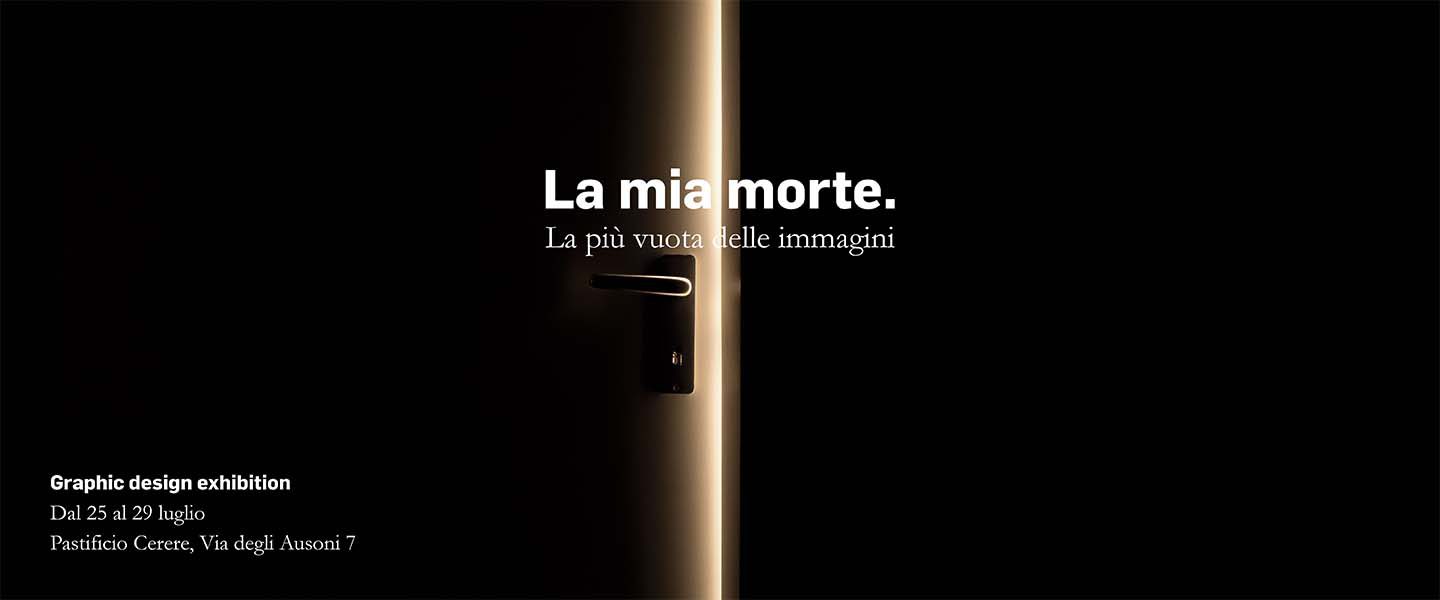Graphic Design Exhibition. Curated by lecturer Enrico Parisio.
Opening on Monday 25 July at 5 pm, RUFA Space, via degli Ausoni 7.
Authors:
Lorenzo Lauro, Adriano Aureli, Carolina Autili, Desireee Dikoume, Gabriele Boccini, Gioia D’innocenti, Giulia Iosa, Hafsa Islam, Niccolò Di Ferdinando, Raffaele Iannone, Silvia Giannetti, Elisa Droisi, Eugenio Poli, Cristina Tomassi, Alex-Dan Zaharia, Rani Rosati, Saadat, Livia Rosati, Samed, Alice Attanasio, Matteo Francescon, Gianmario Palombo, Cristina Tomassi, Agnese Troncone, Afik Shitrit, Claudia Fracassi, Luca Amato, Sofia Paciotti, Gabriele Boccini, Flavia Chiappini, Gioia D’innocenti, Ilaria Bucci, Paolo Berardicurti, Giulia Massoni, Saverio Tozzi, Ilaria Sanguinetti, Agnese Troncone, Lisa Romanato and Gianmario Palombo.
One is born and one dies, that’s life! It is not a scandal to die, it is expected: there are medical examiners who have the last word on the matter, there are legal aspects regarding the succession of property, there are cemeteries that host and remind us of those who are no longer with us, there are political issues on the inalienable right or not to the end of life…
Yes, but we always look at the death of another, not our own death. Death is seen by those who are alive, and they translate it into legal, political, ritual, religious aspects: but is my death, yes, precisely mine, that of Ivan Il’ic, sayable through the vocabulary of life?
Western culture has given some answers.
Classical antiquity tells us that history, as the occurrence of events in Nature, is eternal, since this nature regenerates itself, dies and is reborn in an infinite cycle, just look at the changing of the seasons. And man, as an element of nature, is necessarily immortal as a species, but the single form of determined man is inevitably destined to annihilation, to non-being. Here is the whole ancient tragic conception of man’s fate, of his ‘mortal being’: he will be reborn, but in another form, instead that singular form which is the person, the subject, will disappear forever.
But the most radical question comes to us from the ancient Aegean, from Heraclitus’ fragments:
“Things are born and perish simultaneously”.
“Not one after the other, but together things are born and perish”.
“The moment of birth and the moment of death are the same instant”.
Not nothingness, nec entem, but precisely nothingness, nec hilum: are we sure that, once our lights (not someone else’s) have gone out, the world, as we know it alive, continues to exist?
Read the critical text by Enrico Parisio

